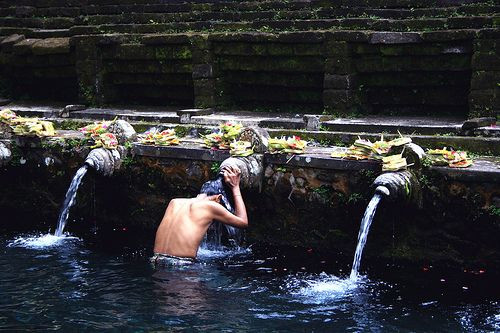86% Of Holy Water Teeming With E. Coli And Other Bacteria Found In Fecal Matter

Holy water’s cleansing properties may be overstated, according to a recent Austrian study that found an overwhelming amount of holy water springs, and all church samples, failed to meet the “microbiological and chemical requirements of national drinking water regulations.”
Given holy water’s integral presence in religious ceremonies, its sanitation merits considerable scrutiny. Researchers at Institute of Hygiene and Applied Immunology at the Medical University of Vienna tested samples of holy water springs and water in church fonts, finding that 86 percent of springs contained bacteria commonly found in fecal matter, such as E. coli, Enterococci, and Campylobacter. As holy water is used to baptize and wet congregants’ lips, the presence of bacteria can pose serious health risks.
"We need to warn people against drinking from these sources," said Dr. Alexander Kirschner, study researcher and microbiologist at the Medical University of Vienna.
The bacteria found in holy water, if it enters a person’s bloodstream, can lead to a raft of health complications, such as diarrhea, vomiting, fever, cramping, and abdominal pain, according to the Mayo Clinic. Water drawn from springs is frequently used in human consumption, although the water is not assessed according to the same standards as regular drinking water — making it particularly susceptible to contaminated consumption.
In addition to bacteria, nitrates were also found in the researchers’ samples. Nitrates are commonly used in fertilizer for their high solubility and biodegradability, and above a certain level in water can result in nitrate toxicity — infants under 6 months old being most vulnerable because of the way in which nitrates are metabolized in young bodies. This toxicity could lead to death if untreated, according to the U.S. Environmental Protection Agency.
The researchers tested 21 springs and 18 fonts in total and found their samples contained 62 million bacteria per milliliter of water, rendering all water undrinkable. Even among the 14 percent of springs that met the microbiological and chemical requirements, “considering results from sanitary inspections of the water catchments, no spring was assessed as a reliable drinking water source,” the researchers wrote.
Holy water has such a sweeping presence around the world that the safety of its consumption has the research team alarmed. Awareness is the main challenge, they say. People need to question, as well as analyze, the sources of what they put in and on their bodies. Holy water’s mysticism may paint it as an inherently pure substance, but the fact is its sources aren’t held to the same standards of regular drinking water.
“We conclude that it is highly necessary to include holy springs in programs for assessment and management of water quality. Public awareness has to be raised to perceive holy springs as potential sources of illness,” the report states. “Holy water can be another source of infection, especially in hospital chapels and frequently visited churches.”
Holy water is identified as any water that has been blessed by a religious figure or member of a clergy. Numerous religions involve holy water in their practices, such as Christianity, Hinduism, and Sikhism — although many others employ the substance in some capacity.
Purifiers have made great leaps in recent decades to disinfect the water, and salt has also been used in certain concentrations to keep it hygienic. But Kirschner cautions that salt is not a reliable way to prevent infection, ABC News reports, instead suggesting priests regularly change the holy water in churches and inform congregants about holy water’s risk and the history behind their springs.
“This may represent a problem that has hitherto been underestimated,” Kirschner said, “especially in hospitals, since there a lot of people with weakened immune systems there.”
Source: Kirschner AK, Atteneder M, Schmidhuber A. Holy springs and holy water: underestimated sources of illness? Journal Of Water And Health. 2013.



























